All about caring for strawberries in spring
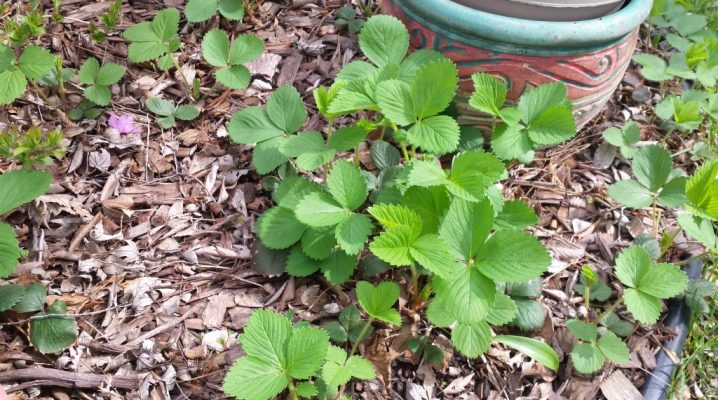
In order to enjoy the strawberry harvest in full in the summer, the culture will need to be given enough attention in the spring. Fertilizers play a special role at this stage - both organic and mineral, but not only this. The article will talk about spring strawberry care activities.
Where to begin?
Strawberry care should be started as early as possible in spring. It is best if the preparation starts immediately after the snow melts and the earth dries out. The work begins with cleaning the area. Covering material is carefully removed and removed until next winter. If the garden strawberry bed was insulated with natural materials - spruce branches, tops or hay, then they are necessarily burned. After that, it is customary to clean the culture with a rake from dry foliage and last year's mulch. Having removed the territory, the strawberries will need to be prepared for the new season: cut and water, add the necessary elements, mulch and, if necessary, transplant.
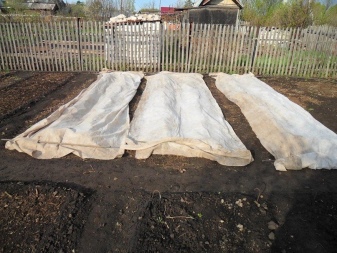
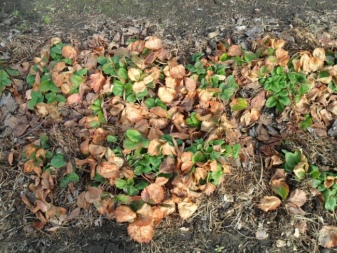
The nuances of trimming
In the spring, at the berry bushes, you need to cut off those leaves that have not survived wintering: wilted, turned yellow, frozen or sick. Such specimens are cut directly with the stalks using disinfected pruners or scissors. In no case should you tear them, otherwise the outlet will be damaged, and the plant itself will hurt in the future. If in the spring there is a thickening of the bush, then the regrown mustache and peduncles will have to be removed.

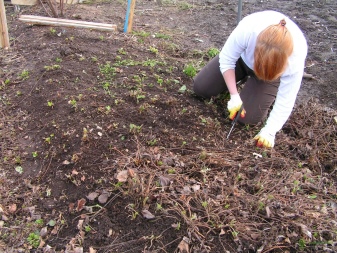
Watering
To accelerate the melting of stale snowdrifts, the surface should be spilled with boiling water, directing the stream directly to the sleeping bushes. Such a procedure will "clean" the soil from insects hiding for the winter, as well as from disease spores. Despite the fact that the soil after winter is abundantly saturated with water, moisture will evaporate rapidly, which means that the culture growing in the open field will still need regular watering. The need for liquid in early spring is quite easily determined by the condition of the bushes: if the leaf blades begin to wither or curl inward, this means that the strawberries need irrigation.
Another way of checking involves digging a hole with a depth of 30 centimeters in the bed and removing a handful of earth from it... If, after unclenching the palm, the sample disintegrates into large fragments, watering is not required yet. The transformation of an earthen coma into dust, on the contrary, indicates the urgency of the procedure. When caring for a berry crop, one must not forget that the roots of the bushes are placed quite close to the surface, deepening no more than 20-30 centimeters, and that is why the liquid evaporates quite quickly.
As a result, if the plant receives less water, then its development is suspended, and the fruits set much worse.
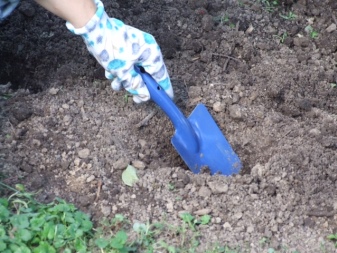
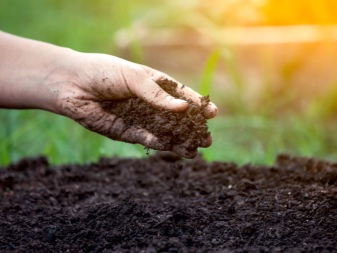
Strawberries should be watered heartily, moistening the soil by about 40 centimeters deep. At the same time, about 0.5 liters of liquid are used for each bush. If the spring is dry, then irrigation is carried out approximately every 5-7 days. This schedule is maintained until the beginning of flowering. The procedure is organized early in the morning, before the sun has risen, or in the late evening, after sunset.Until the bushes acquire flowers, they can be sprinkled, that is, watered from a watering can to stimulate a more luxuriant development of the green mass. After the formation of buds, it will be necessary to direct moisture into the aisles or into special holes dug between strawberry bushes, and also turn to the drip method - spread the hoses over the beds and activate the moisture supply.
The crop reacts very badly when watered with cold water, especially when it comes to liquid extracted from a well or borehole. Water must be allowed to settle for a day and warm up naturally in the sun to room temperature. It should also be mentioned that, despite the love of strawberries for water, waterlogging will be harmful to them. As a result of an increase in the level of humidity, ideal conditions arise for the activity of fungal and putrefactive diseases. This situation will manifest itself especially seriously during the period of setting or already ripening of the berries themselves. On rainy and cool spring days, watering is reduced.

Loosening and weeding
Moistening the beds should be accompanied by loosening the soil. It is necessary to act carefully due to the close location of the roots to the surface. During the cultivation of the land, all weeds are also eliminated. Loosening the ground, you should control so that the soil does not end up in the core of the bush. If everything is done correctly, the process of oxygen supply to the root system will improve, and the soil itself will retain moisture longer. Specimens with bare roots will additionally need to be huddled, leaving a growth point on the surface, and buried ones, on the contrary, should be raised after careful digging.
It is most convenient to process the row spacing with a hoe or hoe. It is worth mentioning that, as part of the first spring weeding, it is recommended to remove specimens of strawberry bushes that did not cope with wintering.... They can be found by the dried brown leaves, which are present not only at the edges, but also in the core of the plant. In addition, old bushes are removed, the age of which has stepped over the 4-year mark. They usually also do poorly in the cold season.
All "green" waste is necessarily burned.
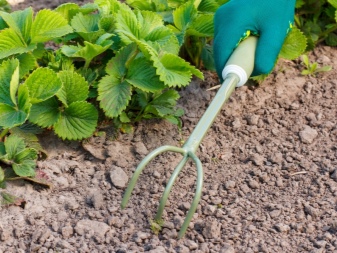
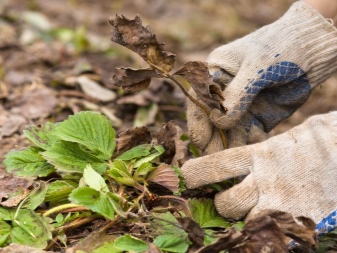
Mulching
All kinds of organic matter are used to mulch garden strawberries.... The procedure, carried out in the spring after irrigation, slows down the evaporation of moisture from the soil, and also prevents the germination of weeds. In addition, the formation of an organic layer promotes better heating of the earth and stimulates the development of adventitious root processes. The advantage is that the berries placed on straw or hay do not come into contact with the ground, which means they do not rot. Various kinds of materials are proposed for this purpose. For example, it is worth using a mixture of low-lying peat and fine-grained rotted manure, taken in equal proportions. In principle, these options can be used separately.
It is not recommended to use humus extracted from the compost heap for mulching. Such a substance usually contains weed seeds, which subsequently germinate very successfully in the beds. On the contrary, fresh straw, sawdust, pine needles or grass cut from the lawn get good reviews. It is also possible to protect open ground with a special covering material, that is, spunbond, or a dark-colored opaque plastic wrap.
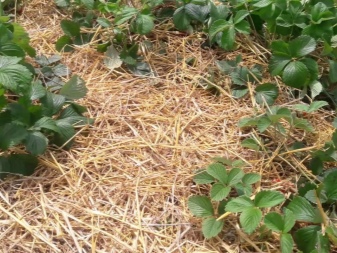
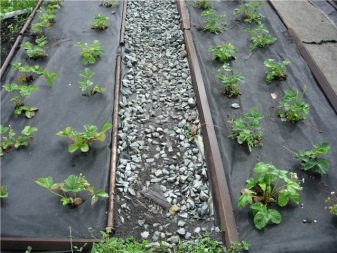
The required mulching layer is on average 3 to 5 centimeters. The soil should be covered not only near the trunk of the bush, but also the entire radius from 15 to 20 centimeters. Some gardeners prefer to treat the entire surface of their strawberry beds. It should be mentioned that in spring, the first step is to clear the berry beds of old mulch. Since a large number of pests and disease spores develop in it during the winter period, the remains of leaves or hay are necessarily burned. Next, the plants are properly cultivated and the ground is covered with fresh material. During the growing season, part of the mulch during irrigation will definitely be washed out, and therefore new components will have to be added from time to time.
Top dressing
The use of fertilizers is the most important part of spring strawberry care, and you can choose between harmless organic additives and mineral complexes, the excess of which negatively affects the taste characteristics of berries. The first feeding is carried out as soon as the snow melts and the bushes begin to grow. It is important to be in time until flowering begins and the heat becomes stable. This procedure aims to stimulate the enlargement of the aerial part and the appearance of ovaries.
The best mineral complexes at this stage include Organic Mix for Strawberries and Berries, as well as Fertika Kristalon for Strawberries and Strawberries.
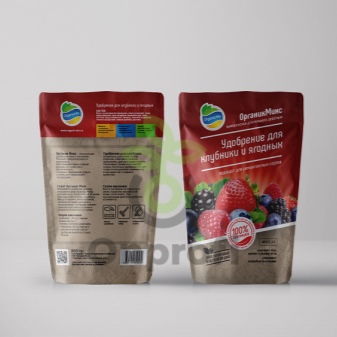
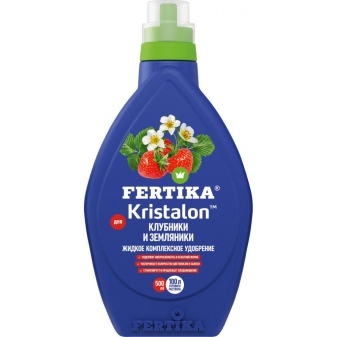
In early spring, ammonium nitrate or azofoska is suitable for the culture.... The drug in the amount of 35-45 grams is scattered between the bushes of each square meter, or first, in the amount of 25-30 grams, it is diluted in 10 liters of water, after which each bush is irrigated with 0.5 liters of the mixture. If urea is used for feeding, then a tablespoon of the product must be diluted with 10 liters of water. Further, each strawberry is irrigated with 0.5 liters of fertilizer. Of course, you can't do without potassium sulfate, 25-30 grams is enough for a square meter of plantings.
To stimulate the growth of green mass, as well as increase the future yield, strawberries should be fertilized with nitrogen-containing combinations. For example, at home, a tablespoon of ammonium or calcium nitrate, nitroammophoska in the amount of one teaspoon and 10 liters of water are combined. It is allowed to use this fertilizer only on top of moistened soil, directing from 0.5 to 1 liter under the root of each bush. In addition to saltpeter, urea is often used, which improves the taste characteristics of strawberries.
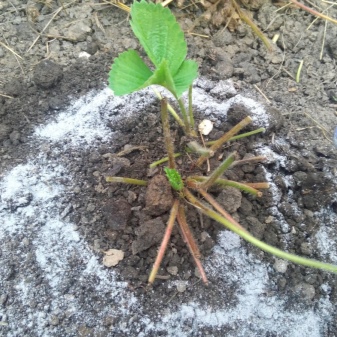
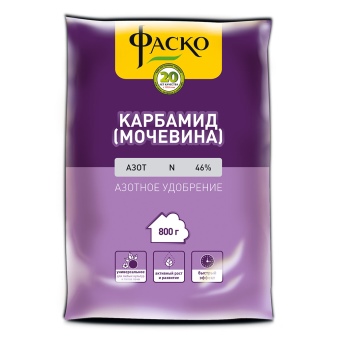
Certain organic varieties also work well. For example, you can add a mullein, 0.3 kilograms of which are previously diluted in 10 liters of water and infused for a couple of days. The finished mixture is poured out for a reason, but is directed strictly into the grooves dug between the bushes. Some gardeners, however, prefer to pour the substance strictly at the root, avoiding splashing on the leaf blades. In principle, a bucket of mortar should be enough for 3-4 running meters.
There is also the option of placing the nutrient mass directly under the roots, with the formation of a two- or three-centimeter layer of earth on top. However, in this case, one has to take into account that fresh mullein is rich in weed seeds that will germinate quite successfully on berry beds... Another recipe suggests combining 0.3 kilograms of rotted mullein, 200 grams of ash, 60 grams of superphosphate, 30 grams of potassium salt and 10 liters of water.
In its manufacture, the mullein is first infused for several days, and then supplemented with the rest of the components.
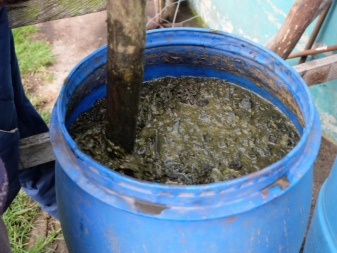
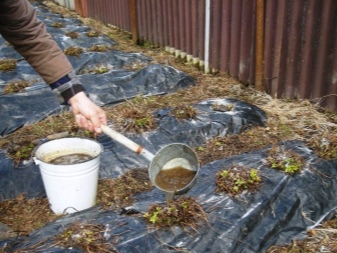
It is customary to simply sprinkle humus near the bush under the leaves.... However, this should never be done with chicken droppings. This natural source of nitrogen needs significant dilution: as much as 20 parts of liquid goes to a part of a solid substance. The finished mixture is infused for about 3-4 days, and then it is used to irrigate the plantings, with a direction of about 0.5 liters under the root of each instance.
It is very convenient to feed the planting herbal solution... It is prepared from nettle and any other weeds. The greens are thoroughly crushed, and then used in such an amount to fill a third of the bucket. The herbs are filled with water and infused for some time.Before watering, the fertilizer will need to be diluted 1 to 3, after which it can be used to irrigate strawberry row spacings. Usually, about 10 liters of additive is poured for every square meter.
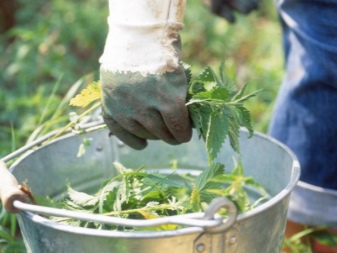
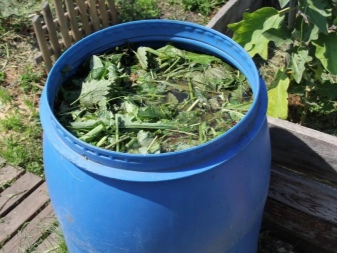
Good results can be achieved by applying wood ash. A glass of ground powder is diluted with a bucket of settled water and immediately brought under the bushes so that for each square meter there is 1 liter of nutrient mixture. And also it is not forbidden to simply scatter ash over the surface. Strawberries respond well to yeast - a product containing nitrogen, potassium, zinc and other elements it needs. You have to use 0.2 kilograms of a live product, which is first diluted with 0.5 liters of heated liquid and infused for 20 to 30 minutes. Before use, the volume will need to be brought to 10 liters by adding clean water. It should be mentioned that all of the above organic matter is also suitable for foliar dressing, but the concentration in this case should be halved.
It is recommended to fertilize the crop in spring in several stages.... The next time after the drifts have come down, fertilizers are used when 2-3 leaves have already appeared on the bush. In this case, we are talking about nitrogen-containing preparations - saltpeter, urea or slurry. Before flowering, strawberries already require phosphorus fertilization, and when ovaries appear - organic matter or mineral complexes.
If the variety manages to give a crop already in the spring, then after its harvesting, potash, phosphorus and nitrogen compounds have to be used.
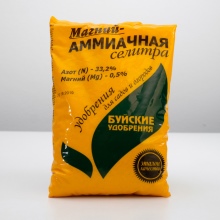
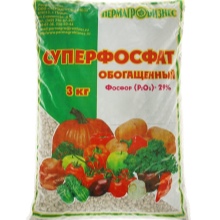

Foliar dressing begins in the first decade of May, when the weather becomes warm and sunny. For this purpose, 10-15 grams of mineral fertilizer crystals are diluted in a bucket of water. At will, potassium humate is used in addition to it. It is worth mentioning that Recently, more and more gardeners are feeding strawberries with dry fertilizer sticks. The number of pieces indicated by the manufacturer is simply buried in the soil near the plantings.
Treatment against diseases and pests
In order for the culture in the garden not to be attacked by insects, and also not to suffer from various kinds of diseases, a number of preventive measures should be taken in the spring. They are organized even before a layer of fresh mulch appears on the beds. In March, the site is treated with preparations containing copper - three percent Bordeaux liquid or two percent copper sulfate. If the air has already warmed up to 15-17 degrees, then it is worth using such biological products as Fitosporin... In April, the bushes are sprayed with fungicidal preparations, for example, "Urea" or "Aktellikom"... Re-treatment with these compounds is carried out at the end of flowering.
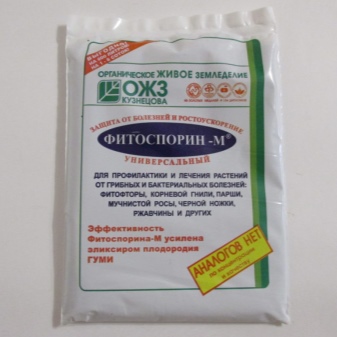
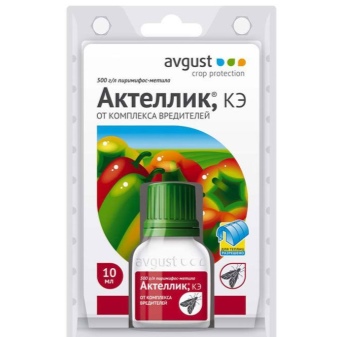
If the berry spent the previous season without problems, then you can simply water the bushes with water heated to +60 degrees, irrigating both the leaf blades and the core... This will eliminate not only insects, but also their larvae and eggs. Ammonium, 40 milliliters of which is diluted in a bucket of water, shows itself quite well. Treatment with such a solution eliminates many pests. In addition, for prevention purposes, it will be possible to spill the beds with tincture of iodine, a weakly concentrated solution of boric acid and potassium permanganate, infusions of mustard, garlic or onions.
To prepare wormwood broth, a kilogram of the crushed plant is poured with 5 liters of water. The mixture is boiled for 10-15 minutes, after which it is used for spraying. By the way, an excellent preventive measure against insects is planting pungent-smelling marigolds, calendula and nasturtium near strawberries.
Finally, you should also use a universal complex preparation called "Strawberry Rescuer", which will allow you to avoid infections with fungal diseases and insect attacks.
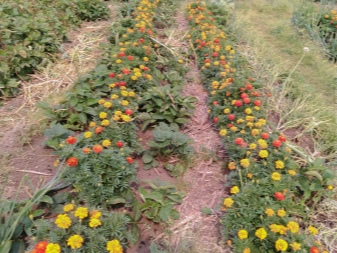
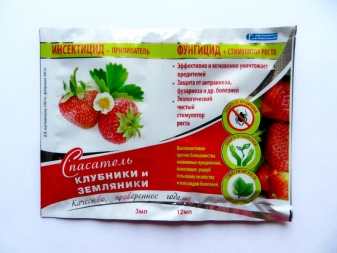
Features of caring for different bushes
Depending on the age of the bushes growing in the country, it is correct to slightly modify the spring care.
Young
Initially, when planting new strawberry bushes in the fall, you need to make sure whether the characteristics of the variety correspond to the weather conditions. For example, if the site is located in the Urals or Siberia, then only frost-resistant varieties with an early fruiting period, such as "Victoria", should be used. In the spring, it will be easier to care for them, since the fertilizers applied during planting should be enough almost until summer. However, if the soil on the site is poor, it will be correct to do the following: feed each bush with a mixture of 0.5 kilograms of mullein, 1 tablespoon of potassium sulfate and a bucket of water.
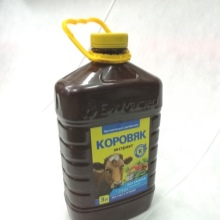
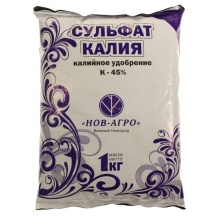
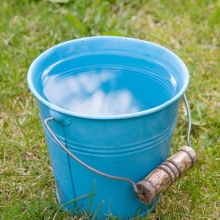
Old
Since the soil tends to deplete over time, old strawberries will need to be fed more frequently. After the planting is able to thin out, they will need to be fed with a solution of nitroammofoska, mullein or bird droppings. When the culture begins to form buds, it will need potassium-containing preparations - potassium sulfate or wood ash. Finally, old specimens must be sprayed with a teaspoon of boric acid diluted in 10 liters of water. This treatment is designed to stimulate the ovaries.
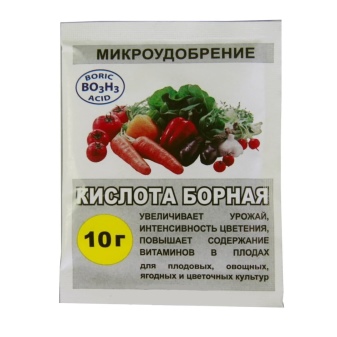
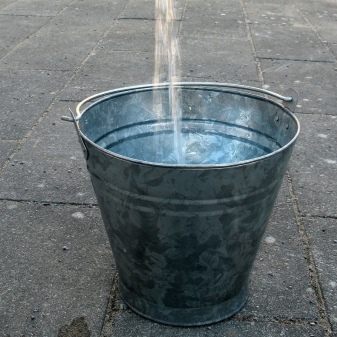
Possible mistakes
One of the most serious mistakes gardeners make is ignoring the spring pruning of strawberries, as well as clearing the beds. Old foliage, frozen shoots, dry stalks will be an ideal environment for pests to breed and spread diseases. Leaving a thick layer of soil will badly affect the condition of the plant. A large amount of land causes difficulties in the development of the root system, which ultimately leads to delayed ripening of fruits. The absence of a mulch layer will quickly lead to the development of putrefactive processes and the appearance of weeds.
An improperly organized watering procedure can become a prerequisite for burns, freezing of the roots, or even an end to fruiting. Loosening too deep can injure closely spaced roots or even pull the plant out of the soil.
A fairly common mistake is the incorrect application of nitrogen-containing fertilizers: their lack at the beginning of the growing season translates into slow growth of the crop, and the excess at the end - into insufficient development of berries due to the fact that all efforts are spent on building up green mass.
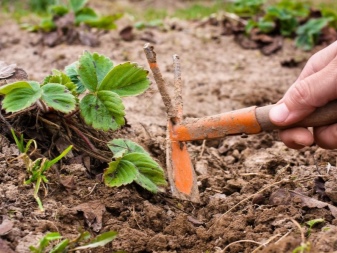
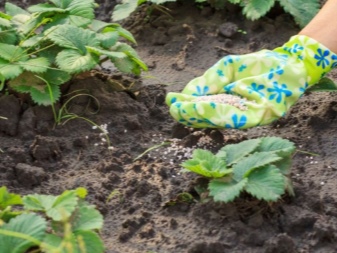













The comment was sent successfully.